

Unraveling the mystery of consciousness. Antonio Damasio asks: How do we become conscious of the things around us?
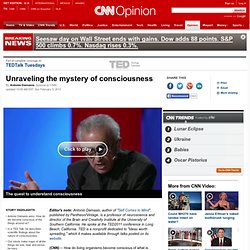
In a TED Talk, he describes scientific findings about the nature of consciousnessOur minds make maps of all the things we see, hear and sense, he saysDamasio: We need more than the maps; it takes a sense of self to be fully conscious Editor's note: Antonio Damasio, author of "Self Comes to Mind", published by Pantheon/Vintage, is a professor of neuroscience and director of the Brain and Creativity Institute at the University of Southern California. He spoke at the TED2011 conference in Long Beach, California. TED is a nonprofit dedicated to "Ideas worth spreading," which it makes available through talks posted on its website. (CNN) -- How do living organisms become conscious of what is happening to them and around them? The Internet Movie Database (IMDb)
The Graph Of Ideas. Update: Graph has now been made interactive.
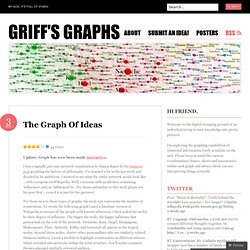
I was originally put onto network visualisation by Simon Raper by his fantastic post graphing the history of philosophy. I’ve learned a lot in the last week and decided to be ambitious. I wanted to see what the entire network would look like – with everyone on Wikipedia. Well, everyone with an infobox containing ‘influences’ and/or ‘influenced by’.
Thought experiment. A thought experiment or Gedankenexperiment (from German) considers some hypothesis, theory,[1] or principle for the purpose of thinking through its consequences.

Given the structure of the experiment, it may or may not be possible to actually perform it, and, in the case that it is possible for it to be performed, there need be no intention of any kind to actually perform the experiment in question. Think Global. Je brein in een computer - Biologie Biotechnologie Filosofie Informatica Natuurkunde Neurowetenschappen Psychologie. Neuroscience. Is Free Will an Illusion? - The Chronicle Review. Free will has long been a fraught concept among philosophers and theologians.
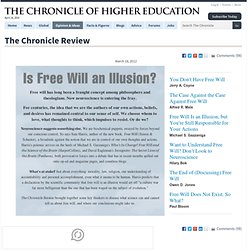
Now neuroscience is entering the fray. For centuries, the idea that we are the authors of our own actions, beliefs, and desires has remained central to our sense of self. We choose whom to love, what thoughts to think, which impulses to resist. Or do we? Neuroscience suggests something else. What's at stake? The Chronicle Review brought together some key thinkers to discuss what science can and cannot tell us about free will, and where our conclusions might take us.
3D model of a nerve terminal in atomic detail. The electrochemical jelly inside your head contains something like one quadrillion synapses, the junctions at which nerve cells talk to one other by converting electrical signals into chemical ones and then back again.
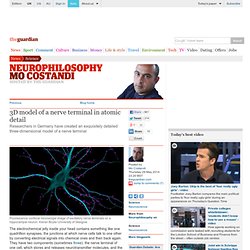
They have two components (sometimes three): the nerve terminal of one cell, which stores and releases neurotransmitter molecules, and the 'post-synaptic' membrane of another cell, which contains binding sites for the neurotransmitters. Synapses are miniscule – nerve terminals are about one thousandth of a millimetre in diameter, and the space between them and the membrane they contact a mere 20-40 millionths of a millimetre wide – and are densely packed in the grey matter of the brain tissue, making them notoriously difficult to study.
Inside the nerve terminal, neurotransmitter molecules are stored in tiny spheres called synaptic vesicles, which are "docked" in an "active zone" just beneath the cell membrane. Rizzoli readily acknowledges this. Reference: Wilhelm, B. Human Anatomy: Learn All About the Human Body at InnerBody.com. Cours de Médecine - Anatomie, PCEM1, Ostéopathie. Introduction: The Human Brain - life - 04 September 2006. The Pentagon of Neuroscience — An Infographic/Listicle for Understanding the Neuroculture – Neurologism. Click here to go straight to the infographic.

It should open in Firefox and Chrome. Neuroscience has hit the big time. Every day, popular newspapers, websites and blogs offer up a heady stew of brain-related self-help (neuro-snake oil?) Do mirror neurons explain understanding, or is it the other way round? – Neurologism. (Alternate title: In Soviet Russia, Mirror Neurons Explain YOU!)
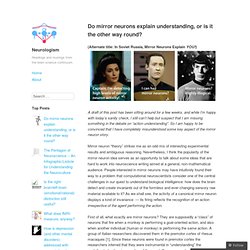
A draft of this post has been sitting around for a few weeks, and while I’m happy with today’s sanity check, I still can’t help but suspect that I am missing something in the debate on “action understanding”. So I am happy to be convinced that I have completely misunderstood some key aspect of the mirror neuron story. Neuroscientists reveal magicians' secrets - Technology & science - Science - LiveScience. NEW YORK — There is a place for magic in science.

Five years ago, on a trip to Las Vegas, neuroscientists Stephen Macknik and Susana Martinez-Conde realized that a partnership was in order with a profession that has an older and more intuitive understanding of how the human brain works. Magicians, it seems, have an advantage over neuroscientists. "Scientists have only studied cognitive illusions for a few decades. Magicians have studied them for hundreds, if not thousands, of years," Martinez-Conde told the audience during a recent presentation here at the New York Academy of Sciences. [ Video: Your Brain on Magic ] She and Macknik, her husband, use illusions as a tool to study how the brain works. The Neuroscience of Decision Making. In an attempt to put matter over mind, researchers are beginning to decipher what exactly is happening in our brains when we are making decisions.

Our thoughts, though abstract and vaporous in form, are determined by the actions of specific neuronal circuits in our brains. The interdisciplinary field known as “decision neuroscience” is uncovering those circuits, thereby mapping thinking on a cellular level. Although still a young field, research in this area has exploded in the last decade, with findings suggesting it is possible to parse out the complexity of thinking into its individual components and decipher how they are integrated when we ponder. Eventually, such findings will lead to a better understanding of a wide range of mental disorders, from depression to schizophrenia, as well as explain how exactly we make the multitude of decisions that ultimately shape our destiny. The Philosophy of Neuroscience. First published Mon Jun 7, 1999; substantive revision Tue May 25, 2010 Over the past three decades, philosophy of science has grown increasingly “local.”
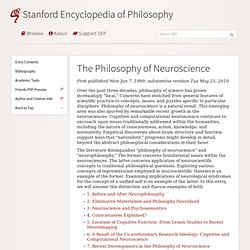
Concerns have switched from general features of scientific practice to concepts, issues, and puzzles specific to particular disciplines. Philosophy of neuroscience is a natural result. This emerging area was also spurred by remarkable recent growth in the neurosciences. Cognitive and computational neuroscience continues to encroach upon issues traditionally addressed within the humanities, including the nature of consciousness, action, knowledge, and normativity. Neuroscience Tutorial. Brain. Neuroanatomy. Figure 1: Highly simplified depiction of a vertebrate brain (lateral view), illustrating its main parts.
(The terms brainstem and rhombencephalon are used by some authors in a wider sense than is the case here.) Neuroanatomy deals with the structure of the nervous system. All nervous systems consist of astonishingly similar elements, the nerve cells or neurons. Despite this fact, nervous systems of different animal classes can be organized in strikingly different ways, and in individual brains different anatomical structures can be made out that are obviously related to different functions. Consciousness. The Mind vs. Brain Debate (What is Consciousness?) Online papers on consciousness. Search tips There are three kinds of search you can perform: All fields This mode searches for entries containing all the entered words in their title, author, date, comment field, or in any of many other fields showing on OPC pages.
Surname This mode searches for entries containing the text string you entered in their author field. Cosmic consciousness. Cosmic consciousness is a book published by Richard Maurice Bucke in 1901, in which he explores the phenomenon of Cosmic Consciousness, "a higher form of consciousness than that possessed by the ordinary man", a consciousness of "the life and order of the universe". History[edit] In 1901 Canadian psychiatrist Richard Maurice Bucke published Cosmic Consciousness: A Study in the Evolution of the Human Mind, in which he explores the phenomenon of Cosmic Consciousness, "a higher form of consciousness than that possessed by the ordinary man", a consciousness of "the life and order of the universe".
Bucke discerns three forms or grades of consciousness: Core Concepts. Het bewustzijnsmechanisme ontdekt - Albert Jarsin. Het Bewustzijnsmechanisme Ontdekt - Weblog - Wij zijn onze waarneming. De Nederlandse neurobioloog Dick Swaab heeft een zeer nuttig boek geschreven met de titel Wij zijn ons brein (2010). Klopt helemaal. 'Bewustzijn is staat van de materie' What the bleep: Down the rabbit hole. Swaab maakt gehakt van Eindeloos Bewustzijn » Skepsis Blog. Introduction: The Human Brain - life - 04 September 2006. How accurate is it to say that a brain area is the ‘seat of’ any particular facet of human experience? – Neurologism. A question from Quora: In neuroscience, how accurate is it to say that a brain area (or circuit) ‘mediates’, ‘evaluates’ or is the ‘seat of’ any particular facet of human experience?
My answer: A very interesting and important question! Brain cell regrowth linked to benefits of exercise, sexual behaviors and reproductive issues. Tampa, Fla. What does fMRI measure, anyway? – Neurologism. In the previous post, I began discussing functional magnetic resonance imaging (fMRI), a popular but controversial experimental technique that allows researchers to investigate brain activity in humans and animals in a relatively safe and non-invasive way. But I found myself commenting more on the problems associated with statistical methods. LE CERVEAU À TOUS LES NIVEAUX! 1-s2.0-S1350453308001616-gr1.jpg 552×406 pixels. Neuranat : un site de neuroanatomie. Morphologie Ce chapitre aborde les bases de l'anatomie descriptive du crâne, des méninges et du système nerveux central. 10% of the Brain Myth. Buddhism and the Brain. Credit: Flickr user eschipul Over the last few decades many Buddhists and quite a few neuroscientists have examined Buddhism and neuroscience, with both groups reporting overlap.
I’m sorry to say I have been privately dismissive. BioMotionLab. BMLrunnerVer1. Welcome to Test yourself? Neuroscience. Brain wiring a no-brainer? Neuron. Bursting. Ionkanaal. Natrium-kaliumpomp. Na+/K+-ATPase. Actiepotentiaal. Neuroglia. Synaps. Gamma-aminobutyric acid. Consciousness. THE BRAIN FROM TOP TO BOTTOM. Theory of mind.
Nervous system. Thalamus. Retina. Home page. Encyclopedia of computational neuroscience. Computational neuroscience. Computational Neuroscience on the Web. Neurosciences on the Internet. Computational neuroanatomy. Digital Anatomist Interactive Atlases. Brain. The Whole Brain Atlas. Atlas: Overview. Central Nervous System - Visual Perspectives. Brain Explorer. Bibliotheque d'images medicales. Sommaire Schémas anatomiques. Neurological Control - Neurotransmitters.
Blogpicture11.jpg (JPEG-afbeelding, 1600x1132 pixels) Etymology of Neuroscience Terms.